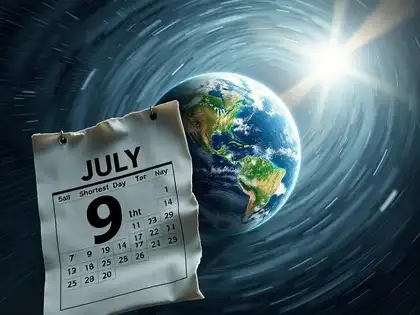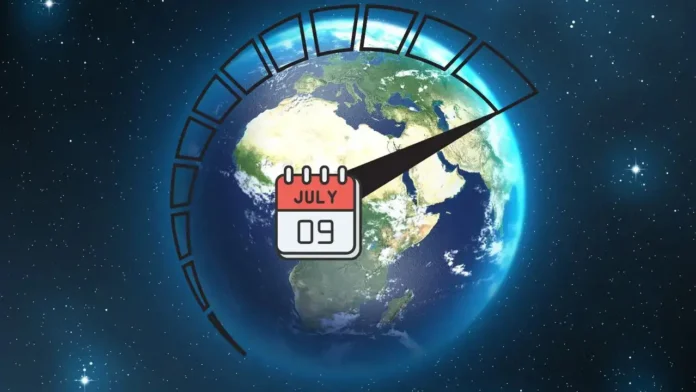Earth turned on its axis faster than we have ever seen on July 9 2025, marking one of the shortest days in modern history when our planet completed its rotation 1.3 milliseconds quicker than the standard 24‑hour clock. Scientists measured this shift with top‑grade instruments and now they watch closely as the trend continues to influence precise systems around the world.
How Experts Measured the Speed Change
The International Earth Rotation and Reference Systems Service tracks our planet by using space tools. They use radio telescopes to watch quasars, lasers to catch satellite reflections, and GPS data from space to note even the tiniest shift in Earth spin. Each day they mix this data to find changes in universal time. On July 9 they found that the day ran 86 399.9987 seconds long, making it 1.3 milliseconds shorter than the norm. This level of detail shows how modern tools catch shifts that once went unnoticed.
Why the Moon Plays a Role
And the Moon holds some of the answer. As the natural tug on Earth water and rock, the Moon pulls on our planet every day. When it sits at a higher tilt from the equator it drags less on our spin. Right now the Moon moves at a peak tilt. That cut in drag lets our planet spin up a bit. So the higher the tilt angle in this cycle, the shorter our days get by a few milliseconds. This effect repeats about every 18 years as the Moon’s orbit tilts and returns to a looser pull on our world.
What Shorter Days Mean for Us

For most people a millisecond shift does not change how we live. Yet critical systems depend on exact time. GPS satellites use universal time to guide ships and cars. Financial exchanges match trades by microseconds. If Earth runs ahead of clocks we risk small errors in those tasks. Time authorities have stopped adding leap seconds since 2016 but now they may add a negative leap second by 2029 to match Earth’s speed. This fix would help us link clock time and Earth time again.
Personal Analysis and Next Steps
I find it striking that a planet we walk on still surprises us with tiny twists that matter for tech we rely on every day. And seeing a trend that goes against the long‐term slowing of our spin makes me think we must keep improving how we track time. I expect agencies to refine their instruments even more so they can spot shifts that used to hide in noise. If we handle these shifts well, we will keep our satellites on track and our clocks in line.
Looking Ahead on the Calendar
Scientists predict two more brief days in the next month. On July 22 records point to a 1.38‑millisecond short day and on August 5 we may see 1.5 milliseconds less. Each new record reminds us that Earth can surprise us in ways that ripple from space all the way down to the phones in our hands.
Sources: republicworld.com

